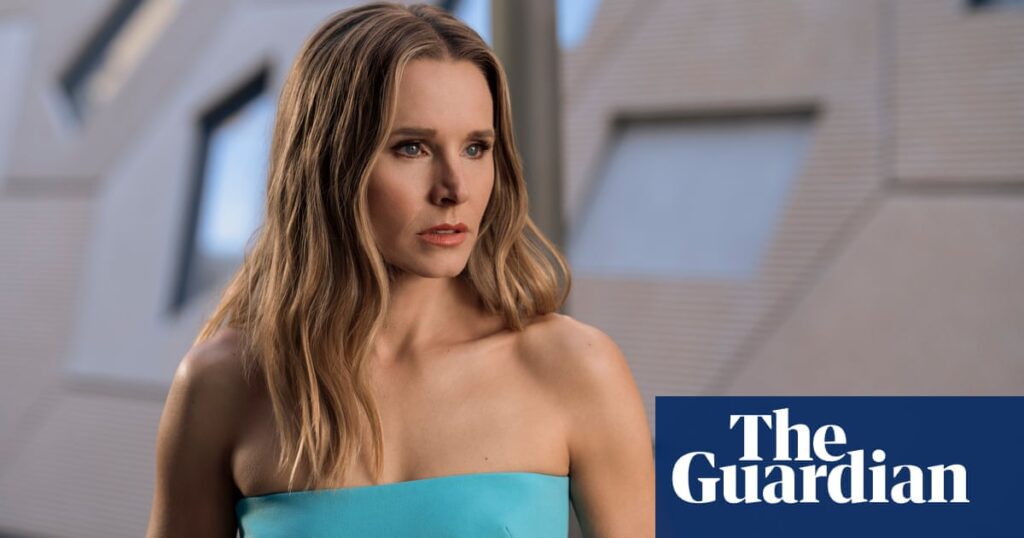The Allure of “TV Hair”: A Look at 2024’s Style Phenomenon
The much-anticipated Netflix series “Nobody Wants This,” premiering in 2024, captured hearts with its intriguing concept featuring a “Hot Rabbi,” the revival of Adam Brody, and the laid-back lifestyle of Los Angeles. However, for many viewers, the standout feature was the embodiment of “TV hair” showcased by co-stars Kristen Bell and Justine Lupe.
A Trend in Hollywood
Throughout the series, Bell and Lupe portrayed two quintessentially Los Angeles sisters who co-host a podcast centered on sex and relationships, both flaunting a signature style of effortlessly waved hair. This look, which falls neither into ringlets nor into perfectly straight locks, is characterized by its glossy appearance and subtle styling—crafted yet casual. A glance at other current television shows brings to light similar styles, such as Meghann Fahey in “The Perfect Couple,” Rose Byrne in “Platonic,” and even Anna Kendrick in “Love Life.” Notably, even in the UK, Ashley Jensen exemplifies this stylish hair in “Shetland,” maintaining a flawless look against the backdrop of a windswept isle. Departing from the ostentatious hairstyles associated with shows like “Love Island,” this trend may appear naturally “done,” but it certainly has been meticulously curated.
A New Standard in Hair Trends
Tina Farey, the editorial director of the British salon chain Rush, notes a growing trend among clients seeking haircuts inspired by Kristen Bell’s style. “People are drawn to this low-maintenance yet glamorous look,” she explains. “The waves frame a variety of face shapes beautifully, adding volume and an air of casual elegance to almost any aesthetic.”
As the Wall Street Journal describes it, this style, often referred to as “beachy waves” or “S-shaped curls,” fits seamlessly into the mainstream. Celebrity hairstylist Barb Thompson, who styled Lupe’s hair, describes this look as “piecey and imperfect,” a style that resonates with many.
The Versatility of TV Hair
Influencer Lilliana Vazquez, who runs the fashion and lifestyle account The LV Guide, emphasizes the central role that this hairstyle plays in her overall image. “I admire what I call ‘done but undone’ hair,” she says. “Living in California, I see surfer girls embody this look, yet I also appreciate the polished style of Parisians. I believe I’ve managed to blend both aesthetics.”
The ease with which this style can be achieved contributes to its widespread appeal. Vazquez mentions it takes her just 15 minutes to style using a one-and-a-quarter-inch curling iron, avoiding the clamp to prevent corkscrew curls, which she finds unattractive.
Rachael Gibson, who curates the Instagram account The Hair Historian, traces the origins of TV hair back nearly two decades, pinpointing Lauren Conrad from “The Hills” as a key influencer of the look.
A Universality with Limitations
Gibson shares, “This hairstyle has become shorthand for societal expectations of how women should present themselves. It’s akin to the ‘jeans and a nice top’ combination—appealing to a broad audience and easily attainable.”
However, it’s essential to note that this trend predominantly resonates with white women, often described as fitting within a specific cultural coding. Gibson reflects on the shared imagery of the “Christian Girl Autumn” meme, tying it to the hairstyle’s commonality and cultural significance.
Easy Styling, Authenticity, and Relatability
What sets this trend apart from previous iconic hair moments—like Farah Fawcett’s 1970s feathered look or Jennifer Aniston’s 1990s ‘Rachel’—is its simplicity. Aniston had famously bemoaned the time-consuming blow-dries required to maintain “The Rachel,” whereas the current trend is more pragmatic. This look relies on accessible styling tools, with TikTok users praising the effectiveness of products like the Shark Flexstyle Air Styler and the Dyson Airwrap. Gibson articulates, “We are in an era where good heat-styling tools are affordable and readily available.”
The enduring appeal of TV hair lies in its low-maintenance allure. Onscreen, it imparts an authentic touch that makes characters more relatable. Offscreen, it offers an air of effortless casualness. “This hairstyle can serve to tone down an outfit, providing a relaxed vibe,” Thompson explains. “You don’t have to stress about your hair.” Similarly, Vazquez shares that she appreciates its versatility for evening events when dressing up, allowing for a stylish yet less predictable appearance.


